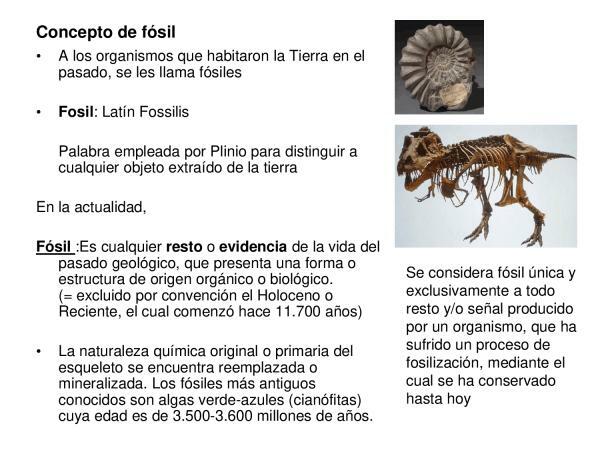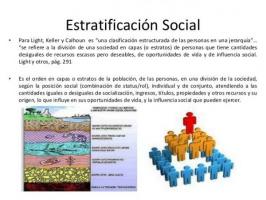The ORIGIN of LIFE according to biology

Since man had the ability to think and reason, he began to consider the origin of his own life and, later, the origin of life. Throughout history, different disciplines such as religion, theology, astronomy or geology have tried to explain the origin of the first living being on Earth.
In this lesson from a TEACHER we will see what is believed to be the origin of life according to biology: different hypotheses and experiments that scientists have proposed throughout history. If you want to know more, we invite you to continue reading!
Index
- The origin of life according to fossils
- Climatic conditions at the origin of life
- Oparin and Haldane hypothesis on the origin of life
- Miller and Urey's experiment
- Other hypotheses about the origin of life
The origin of life according to fossils.
There are some Theories about the origin of life and fossils provide us with very interesting information. Thanks to radiometric dating of the oldest rocks on Earth, rocks on the Moon, and meteorites, geologists have been able to estimate that the Earth formed around
4.5 billion years. In its early days, the Earth was not as we know it now: it was continuously bombarded by asteroids and underwent cyclical periods of warming and cooling.It is clear when the Earth appeared, approximately, but when did the first living beings appear? The origin of life according to biology focuses, first of all, on the study of fossils: the oldest fossils discovered so far date from 3,500 million years ago. These fossils, found in Western Australia, are not complex animal fossils but stromatolites. Stromatolites are fossils of microorganisms, which are formed by the addition, layer after layer, of single-celled microbes. The oldest fossils of the first multicellular animals date back 500 million years.
However, life on our planet began earlier. Despite what it may seem, bacteria are relatively complex organisms within the biology, which indicates that life probably began much earlier, thanks to organisms even more simple. However, these simpler animals would not have the characteristics necessary to fossilize, so there is no evidence of their existence on Earth that we can study. Simple fossil lack of life, predating bacteria, makes it difficult (or impossible) to accurately determine when life originated.

Image: Docsity
Climatic conditions at the origin of life.
At a stalemate in fossil research, the researchers took another approach to finding out the origin of life: if they found out what conditions were on Earth at the time, perhaps they could find out what biological process it would be more likely that it had given rise to the first living being. In addition, they would have very important information: What were the first living things made of?
After several decades of study, it was possible to deduce that the earth's atmosphere at the time when the first living beings are believed to appear was different from the current one. At that time, the atmosphere lacked oxygen and it was fundamentally reducing and non-oxidizing as at present, since it was composed mainly of methane, ammonia, water vapor and carbon dioxide. With this information, the researchers were able to begin to present different hypotheses and experiments to confirm them.
Oparin and Haldane hypothesis about the origin of life.
The first proposal on the origin of life according to biology was proposed in 1920, by scientists Aleksandr Oparin and J.B.S. Haldane. His hypothesis was that life on Earth could have arisen step by step from non-living matter through a process of "gradual chemical evolution."
This hypothesis was not new: in 1872, Henry Charlton Bastian published a book on the subject called "The beginnings of life"; it already spoke of archaeobiosis, a concept similar to this, with which Darwin said he was in full agreement.
Oparin and Haldane suggested that simple inorganic molecules falling to the ground from the atmosphere may have reacted with energy from rays or the sun. These chemical reactions would give rise to more complex molecules, such as amino acids and nucleotides. These amino acids and nucleotides that may have accumulated in the oceans to form a "primordial soup", inert but with many possibilities.
The components of this primordial soup, amino acids and nucleotides, could have combined in other reactions to form larger and more complex molecules: polymers. The main polymers could be proteins and nucleic acids, perhaps in wells on the shore from the water, where there was more inorganic matter and the radiation reached the molecules.
The polymers could have been assembled into larger units, capable of maintaining and duplicating themselves. This would be the first step in the formation of life and it is where the researchers' versions diverged: Oparin thought that these could be "colonies" of grouped proteins, which were capable of carrying out different reactions to obtain energy and matter for their reproduction (metabolism). Instead, Haldane proposed that macromolecules could have been enclosed by membranes, to form closed systems or "cells", in which a large number of reactions were carried out.

Image: The Left Daily
The Miller and Urey Experiment.
The Oparin and Haldane hypothesis had (and has) many followers. In 1953, Stanley Miller and Harold Urey did an experiment to see if the ideas of Oparin and Haldane could be put into practice.
Their experiment had a simple approach: they put warm water and the mixture of gases that supposedly abounded in the Earth's atmosphere in its early days in a closed flask. To simulate the energy reaching these substances, Miller and Urey sent sparks of electricity through their experimental system. Within a week, various types of amino acids, sugars, lipids, and other organic molecules had formed. Although not complex molecules like DNA or proteins.
This experiment showed that organic structural units can be formed (especially amino acids) from inorganic precursors, although they are not really useful since more It was later shown that the atmospheric conditions of the time would not be those used in the experiment.

Image: Google Sites
Other hypotheses about the origin of life.
The hypothesis put forward by Oparin and Haldane suggested that amino acids appeared first and then the metabolic reactions that lead to their multiplication. Later in history another stream appeared of thought: researchers who believed that the first forms of life were nucleic acids, which duplicated themselves themselves, such as RNA or DNA, and that other elements such as metabolic networks appeared later, to improve their survival.
In the 90s a series of investigations appeared that demonstrated two facts that reinforced this hypothesis:
- if amino acids were heated in the absence of water, they could bind to form proteins
- that RNA nucleotides can bind when exposed to a clay surface. The clay would therefore be a catalyst to form an RNA polymer.
After studying both theories, we are no closer to knowing the truth since we are faced with a problem: living beings They require specific components (proteins and lipids) and an information transmission system (nucleic acids). The former without the latter would give rise to formations that cannot be copied and reproduced, and the latter without the former could not express their information to allow copying.
If you want to read more articles similar to The origin of life according to biology, we recommend that you enter our category of Story.
Bibliography
- Pardo, A. (2007). The origin of life and the evolution of species: science and interpretations.
- Khan Academy (s.f) Hypothesis about the origin of life. Recovered from: https://es.khanacademy.org/science/biology/history-of-life-on-earth/history-life-on-earth/a/hypotheses-about-the-origins-of-life



